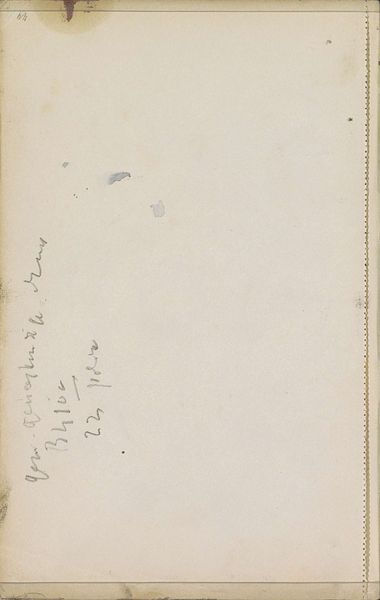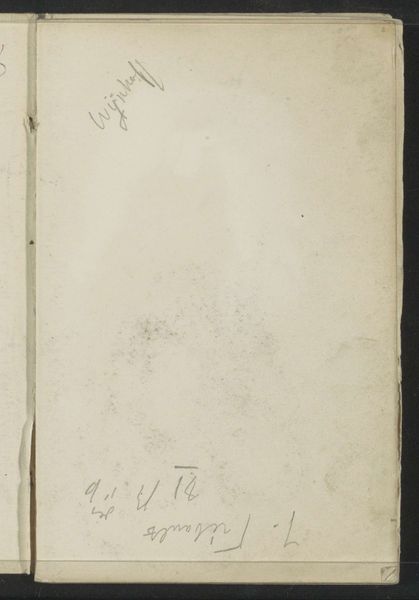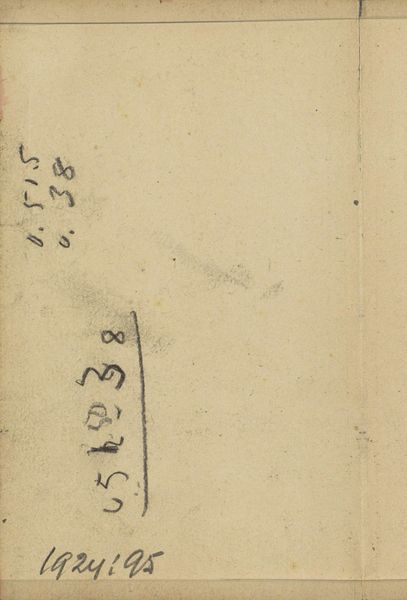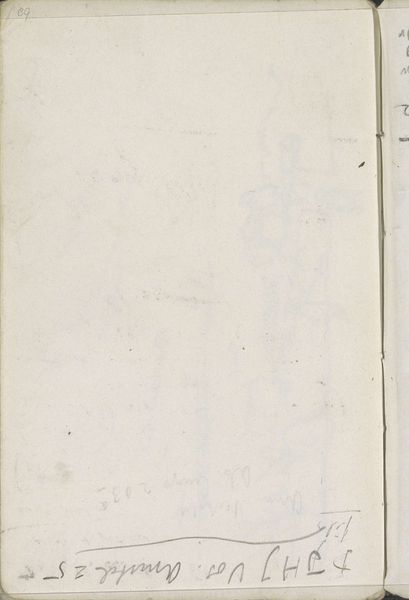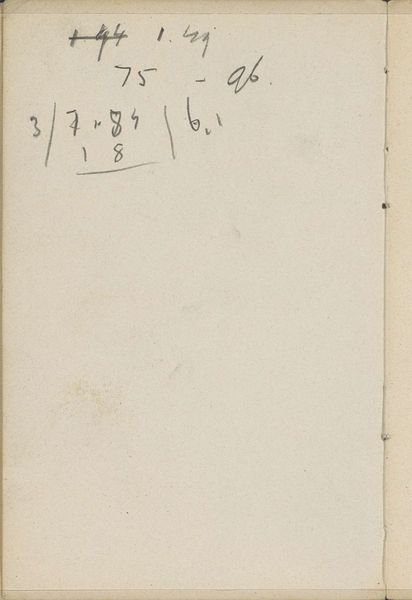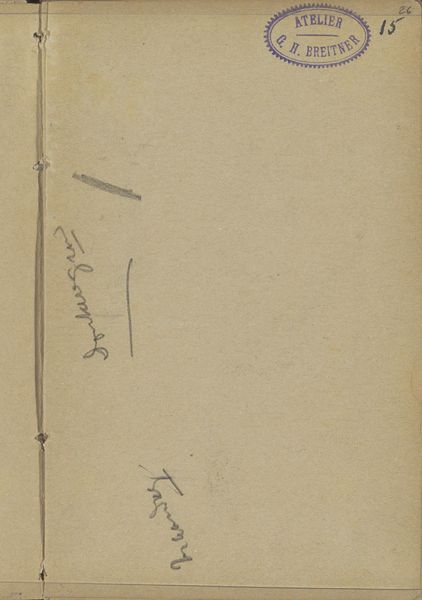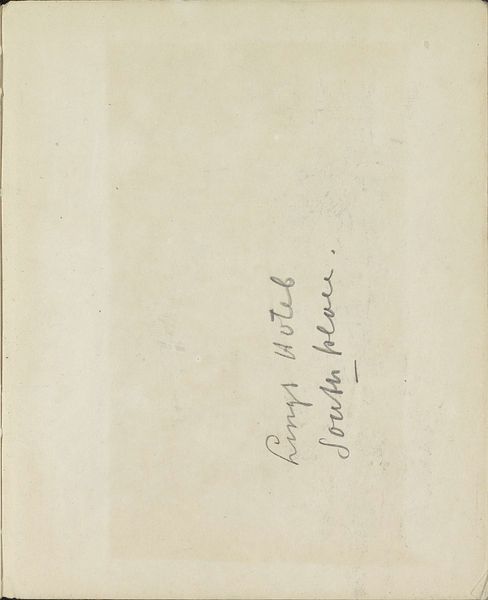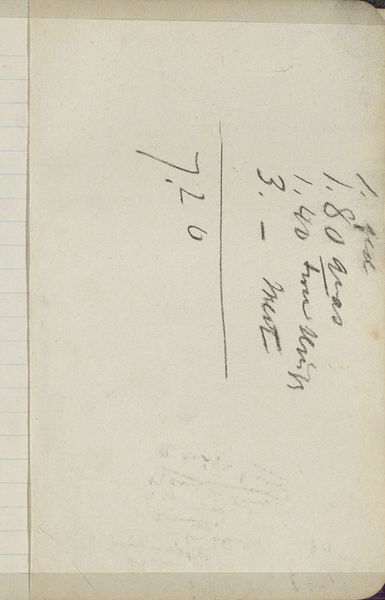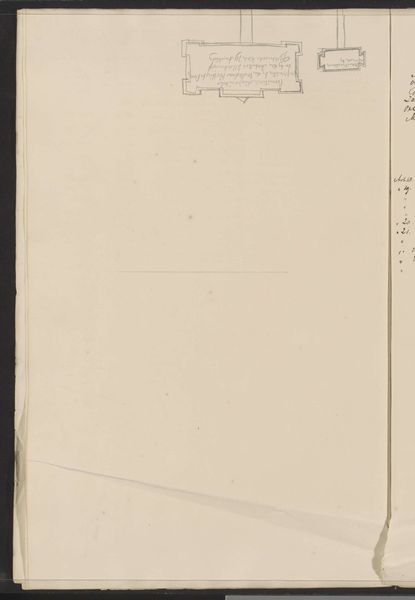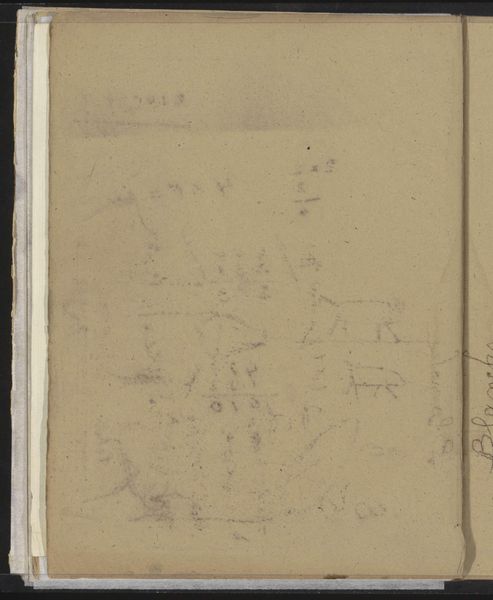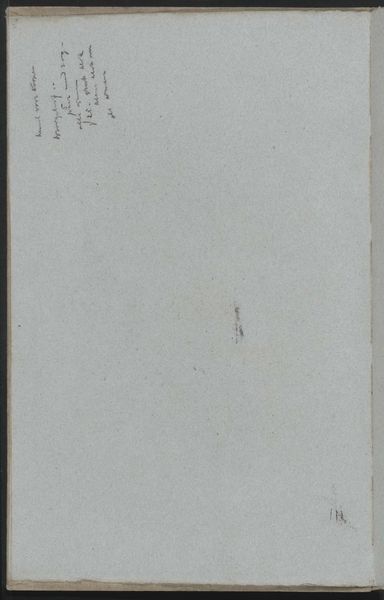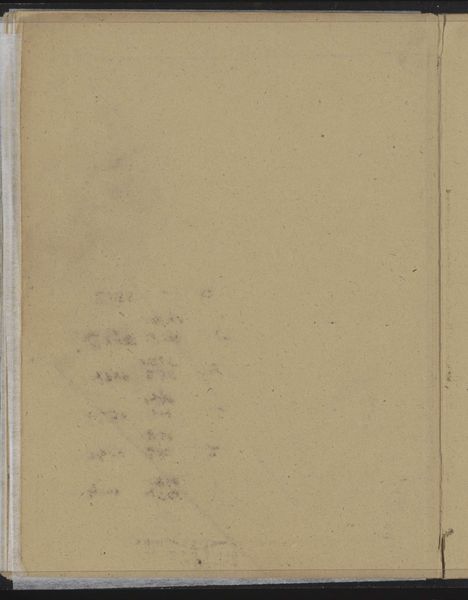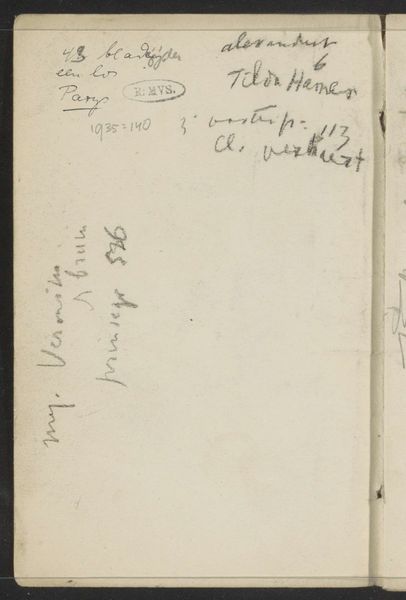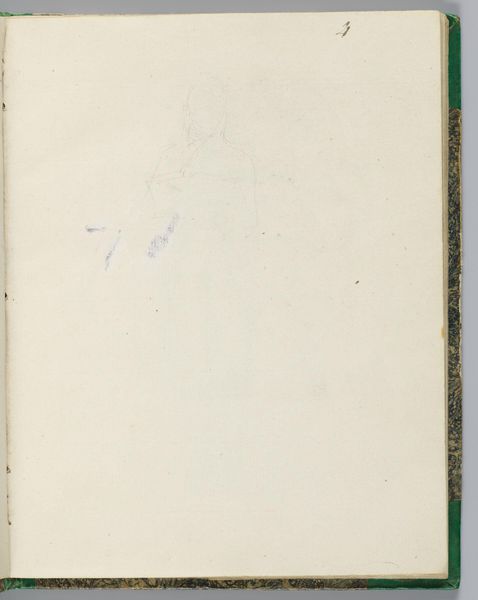
drawing, paper, pencil
#
portrait
#
drawing
#
hand-lettering
#
dutch-golden-age
#
sketch book
#
hand drawn type
#
hand lettering
#
paper
#
personal sketchbook
#
hand-drawn typeface
#
fading type
#
pencil
#
sketchbook drawing
#
sketchbook art
#
small lettering
Copyright: Rijks Museum: Open Domain
Editor: We're looking at Willem Springer Jr.’s “Notitie,” circa 1864, a drawing rendered in pencil on paper. It seems to be a page from a sketchbook. The visible text gives me a feeling of a forgotten administrative note. What catches your eye in this unassuming drawing? Curator: For me, the interest lies in the very 'thingness' of it. This isn't high art meant for display, but rather a working document, a place for preliminary sketches, or even simply calculations. How does its existence challenge our expectations of artistic creation, moving it from rarefied skill to the practical work of recording and organizing information? Editor: So, it's significant because of its mundanity? Curator: Precisely. It highlights the physical processes of artistic labor and knowledge-making. The material of paper, the cheap pencil, the very act of handwriting...it all speaks to a specific moment in the artist's practice. We often overlook such works in favor of finished products, failing to consider the materials and effort involved in creating even simple sketches. The labor put in practice, over time, that then gives an artist's 'final' piece the hand-lettered quality or style, in part due to the artist's history in materials, and what they used. Editor: That makes me consider how much we value only the "end result." It’s almost like we don't think about what the artist used to produce the final work. Curator: Absolutely! What about the economics? Was paper readily available, or a luxury? How did this affect the kind of drawing being done, the amount of drawing, and the techniques involved in hand lettering styles? Editor: I never considered that before! This has given me a lot to think about regarding not just finished work, but labor involved in its preliminary concepts as well! Curator: Indeed. It changes our idea of "art" by foregrounding process, value, material and function, not aesthetics alone.
Comments
No comments
Be the first to comment and join the conversation on the ultimate creative platform.
